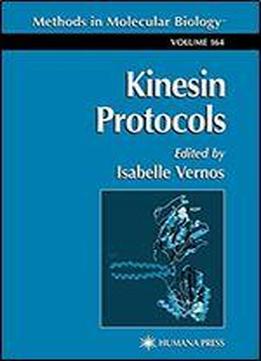
Kinesin Protocols (methods In Molecular Biology)
by Isabelle Vernos /
2001 / English / PDF
8.2 MB Download
By the end of the 1980s only two microtubule-dependent motors, the plus end-directed kinesin and the minus end-directed cytoplasmic dynein, had been identified. At the time, these two motors seemed almost sufficient to explain directional motility events on polar microtubule tracks in the cell. No- theless, shortly after, the tip of the iceberg began to emerge with the identi- cation of proteins containing in their sequences a domain found in kinesin. This domain, called the “motor domain,” conferred on these proteins the essential property of moving on microtubules, using the energy derived from ATP hydro- sis. Since then, the identification of new proteins belonging to the kinesin superfamily of microtubule-dependent motors has gone at such a pace that nowadays more than 200 entries with motor domain sequences are deposited in the database. Kinesin family members are found in all eukaryotic org- isms tested. They present a wide range of domain organizations with a motor domain located at different positions in the molecule. Their motility prop- ties are also variable in directionality, velocity, and such other characteristics as bundling activity and processivity. Finally, and most important, they p- ticipate in a multitude of cellular functions. Our understanding of many cel- lar events, such as mitotic spindle assembly and neuronal transport, to cite only two, has progressed substantially in the last few years thanks to the id- tification of these motors.











